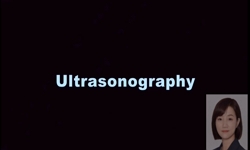PURPOSE. The objective of this study was to investigate the effect of surface treatments on microtensile bond strengths (MTBSs) of two types of indirect resin composites bonded to a conventional direct resin composite. MATERIALS AND METHODS. Indirect ...
http://chineseinput.net/에서 pinyin(병음)방식으로 중국어를 변환할 수 있습니다.
변환된 중국어를 복사하여 사용하시면 됩니다.
- 中文 을 입력하시려면 zhongwen을 입력하시고 space를누르시면됩니다.
- 北京 을 입력하시려면 beijing을 입력하시고 space를 누르시면 됩니다.
https://www.riss.kr/link?id=A103058522
-
저자
Porntida Visuttiwattanakorn (Mahidol University, Bangkok, Thailand) ; Kallaya Suputtamongkol (Mahidol University, Bangkok, Thailand) ; Duangjai Angkoonsit (Mahidol University, Bangkok, Thailand) ; Sunattha Kaewthong (Mahidol University, Bangkok, Thailand) ; Piyanan Charoonanan (Mahidol University, Bangkok, Thailand)

- 발행기관
- 학술지명
- 권호사항
-
발행연도
2017
-
작성언어
English
- 주제어
-
KDC
515
-
등재정보
KCI등재,SCIE,SCOPUS
-
자료형태
학술저널
-
수록면
38-44(7쪽)
-
KCI 피인용횟수
3
- DOI식별코드
- 제공처
- 소장기관
-
0
상세조회 -
0
다운로드
부가정보
다국어 초록 (Multilingual Abstract)
PURPOSE. The objective of this study was to investigate the effect of surface treatments on microtensile bond strengths (MTBSs) of two types of indirect resin composites bonded to a conventional direct resin composite. MATERIALS AND METHODS. Indirect resin composite blocks of Ceramage and SR Nexco were prepared in a plastic mold having a dimension of 10 × 10 × 4 mm. These composite blocks were divided into three groups according to their surface treatments: Group1: Sandblast (SB); Group2: Sandblast and ultrasonically clean (SB+UL); Group3: Sandblast plus silane (SB+SI). After bonding with direct resin composite, indirect-direct resin composite blocks were kept in distilled water for 24 hours at 37oC and cut into microbars with the dimension of 1 × 1 × 8 mm. Microbar specimens (n = 40 per group) were loaded using a universal testing machine. Failure modes and compositions were evaluated by SEM. The statistical analyses of MTBS were performed by two-way ANOVA and Dunnett’s test at α = .05. RESULTS. Surface treatments and brands had effects on the MTBS without an interaction between these two factors. For SR Nexco, the MTBSs of SB and SB+SI group were significantly higher than that of SB+UL. For Ceramage, the MTBSs of SB and SB+SI were significantly higher than that of SB+UL. The mean MTBS of the Ceramage specimens was significantly higher than that of SR Nexco for all surface treatments. CONCLUSION. Sandblasting with or without silane application could improve the bond strengths of repaired indirect resin composites to a conventional direct resin composite.
참고문헌 (Reference)
1 Touati B, "The evolution of aesthetic restorative materials for inlays and onlays: a review" 8 : 657-666, 1996
2 Lucena-Martín C, "The effect of various surface treatments and bonding agents on the repaired strength of heat-treated composites" 86 : 481-488, 2001
3 Cesar PF, "Tensile bond strength of composite repairs on Artglass using different surface treatments" 14 : 373-377, 2001
4 Hummel SK, "Surface treatment of indirect resin composite surfaces before cementation" 77 : 568-572, 1997
5 Touati B, "Second generation laboratory composite resins for indirect restorations" 9 : 108-118, 1997
6 Dall’oca S, "Repair potential of a laboratory-processed nano-hybrid resin composite" 50 : 403-412, 2008
7 Dietschi D, "Marginal adaptation and seal of direct and indirect Class II composite resin restorations: an in vitro evaluation" 26 : 127-138, 1995
8 Hickel R, "Longevity of restorations in posterior teeth and reasons for failure" 3 : 45-64, 2001
9 Loomans BA, "Is there one optimal repair technique for all composites?" 27 : 701-709, 2011
10 Rodrigues SA Jr, "Influence of surface treatments on the bond strength of repaired resin composite restorative materials" 25 : 442-451, 2009
1 Touati B, "The evolution of aesthetic restorative materials for inlays and onlays: a review" 8 : 657-666, 1996
2 Lucena-Martín C, "The effect of various surface treatments and bonding agents on the repaired strength of heat-treated composites" 86 : 481-488, 2001
3 Cesar PF, "Tensile bond strength of composite repairs on Artglass using different surface treatments" 14 : 373-377, 2001
4 Hummel SK, "Surface treatment of indirect resin composite surfaces before cementation" 77 : 568-572, 1997
5 Touati B, "Second generation laboratory composite resins for indirect restorations" 9 : 108-118, 1997
6 Dall’oca S, "Repair potential of a laboratory-processed nano-hybrid resin composite" 50 : 403-412, 2008
7 Dietschi D, "Marginal adaptation and seal of direct and indirect Class II composite resin restorations: an in vitro evaluation" 26 : 127-138, 1995
8 Hickel R, "Longevity of restorations in posterior teeth and reasons for failure" 3 : 45-64, 2001
9 Loomans BA, "Is there one optimal repair technique for all composites?" 27 : 701-709, 2011
10 Rodrigues SA Jr, "Influence of surface treatments on the bond strength of repaired resin composite restorative materials" 25 : 442-451, 2009
11 Hirata M, "Influence of laboratory light sources on the wear characteristics of indirect composites" 30 : 127-135, 2011
12 Nandini S, "Indirect resin composites" 13 : 184-194, 2010
13 Soares CJ, "In vitro analysis of the radiodensity of indirect composites and ceramic inlay systems and its influence on the detection of cement overhangs" 11 : 331-336, 2007
14 Martos J, "Hydrolytic degradation of composite resins: effects on the microhardness" 6 : 599-604, 2003
15 Soares CJ, "Fracture resistance of teeth restored with indirect-composite and ceramic inlay systems" 35 : 281-286, 2004
16 Soares CJ, "Effect of surface treatments of laboratory-fabricated composites on the microtensile bond strength to a luting resin cement" 12 : 45-50, 2004
17 Souza EM, "Effect of different surface treatments on the repair bond strength of indirect composites" 21 : 93-96, 2008
18 Brosh T, "Effect of combinations of surface treatments and bonding agents on the bond strength of repaired composites" 77 : 122-126, 1997
19 Swift EJ Jr, "Effect of a silane coupling agent on composite repair strengths" 7 : 200-202, 1994
20 Berger SB, "Characterization of water sorption, solubility and filler particles of light-cured composite resins" 20 : 314-318, 2009
21 Trajtenberg CP, "Bond strengths of repaired laboratory composites using three surface treatments and three primers" 17 : 123-126, 2004
22 Furuse AY, "Bond strength of resin-resin interfaces contaminated with saliva and submitted to different surface treatments" 15 : 501-505, 2007
23 Passos SP, "Bond strength durability of direct and indirect composite systems following surface conditioning for repair" 9 : 443-447, 2007
24 Lung CY, "Aspects of silane coupling agents and surface conditioning in dentistry: an overview" 28 : 467-477, 2012
25 Miara P, "Aesthetic guidelines for second-generation indirect inlay and onlay composite restorations" 10 : 423-431, 1998
동일학술지(권/호) 다른 논문
-
- 대한치과보철학회
- Mi-Jung Yun
- 2017
- KCI등재,SCIE,SCOPUS
-
- 대한치과보철학회
- Eunjee Lee
- 2017
- KCI등재,SCIE,SCOPUS
-
- 대한치과보철학회
- So-Min Im
- 2017
- KCI등재,SCIE,SCOPUS
-
Three-dimensional finite element analysis of platform switched implant
- 대한치과보철학회
- Se-Young Moon
- 2017
- KCI등재,SCIE,SCOPUS
분석정보
인용정보 인용지수 설명보기
학술지 이력
| 연월일 | 이력구분 | 이력상세 | 등재구분 |
|---|---|---|---|
| 2023 | 평가예정 | 해외DB학술지평가 신청대상 (해외등재 학술지 평가) | |
| 2020-01-01 | 평가 | 등재학술지 유지 (해외등재 학술지 평가) |  |
| 2010-01-01 | 평가 | 등재학술지 선정 (등재후보2차) |  |
| 2009-01-01 | 평가 | 등재후보 1차 PASS (등재후보1차) |  |
| 2009-01-01 | 평가 | 학술지 분리 (기타) |  |
학술지 인용정보
| 기준연도 | WOS-KCI 통합IF(2년) | KCIF(2년) | KCIF(3년) |
|---|---|---|---|
| 2016 | 0.91 | 0.23 | 0.75 |
| KCIF(4년) | KCIF(5년) | 중심성지수(3년) | 즉시성지수 |
| 0.67 | 0.59 | 0.57 | 0.04 |






 RISS
RISS






